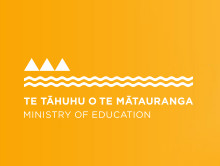I Muri I te Pānui Pukapuka
After Reading
Ka taea te whakamahi ēnei ngohe hei aromatawai, hei whakawhānui hoki i ngā pūkenga o ngā ākonga.
Here are some possible assement and extension activities.
1. Tirohia, pānui tahitia ngā meka matua kua kohia ki te Papa Meka Matua mō te kaupapa nei. Whakawhitiwhiti whakaaro mō ngā mahi kua oti i ngā ākonga nei:
- He aha ngā akoranOga matua kua mau i a tātou mai i tēnei mahi?
- He pātai anō āu mō te kaupapa nei?
Me he maha ngā meka kei te papa nei, me whakakao ngā ākonga i ngā kōrero nei hei hanga i tētahi pukapuka nui, i tētahi pānui nui rānei mō Te Ope Taua 28. Hoatu kia 2, kia 3 rānei ngā meka matua ki ia ākonga, ā, mā rātou hei kimi, hei tā rānei i ētahi pikitia hei tāpiri atu ki te kōrero nei. Ka mutu ana ngā whārangi katoa, kohia, ā, hangaia he pukapuka.
Review the information gathered on the Facts Board. Discuss with the students:
- What are the main ideas we have learned from reading this book?
- Do you have other questions you would like to find the answers to?
Students could collate the facts from the board to make a big book or display about the 28th Māori Battalion.
2. Mā ngā ākonga e tuhituhi tētahi reta, ānō nei he hōia rātou o Te Ope Taua 28, e noho ana ki rāwāhi. Kei te tuhi rātou ki tētahi hoa, ki tētahi whanaunga rānei i te kāinga. Mā te tuhinga nei hei whakaatu atu ngā mea katoa kua ako rātou mō ngā hōia o Te Ope Taua 28 me te āhua o tō rātou noho ki rāwāhi.
Get your students to show what they have learnt about the soldier’s lifestyle by writing a letter as if they were a soldier describing life overseas to a family member. Encourage them to include all the new information they have learned in the letter.
He hokinga whakamuri hei kōkiringa whakamua
Ideas for reflecting in learning and planning next learning steps
1. Matapakihia tēnei tangata, te “toa”. He aha ngā pūmanawa o te toa i ngā wā o ngā tūpuna? I te wā o te Pakanga Tuarua o te Ao? Ināianei? Kua rerekē ōna pūkenga i roto i ngā tau? He ōrite tonu pea ētahi? Me whiriwhiri e ngā ākonga tētahi “toa” hei rangahau mā rātou. Tēnā pea he toa nō ngā rā o mua, nō nāianei rānei; he tangata rongonui, he whanaunga rānei. He aha ōna pūmanawa? He aha e kīia ai ia he “toa”? Mā ia ākonga e whakamārama atu āna kitenga ki te katoa.
Discuss what a “hero” is with the students. What attributes does he/she have? Compare heroes of the past, with war heroes of WWII, and heroes of today. Which attributes are different? Which are the same? Students should choose a “hero” to research. It could be a famous person or a member of their whānau. What attributes does he/she have that make him/her a hero? Students should share their findings.
2. Matapakihia tēnei mea te “pakanga”. Kōrero mō ngā momo pakanga e mōhio ana ngā ākonga nō ngā wā o mua, arā, ko ngā momo pakanga o ngā tūpuna me ngā momo pakanga o te ao. Ki a rātou, e whai hua ana tēnei tūmomo tikanga? Whakatūria tētahi taupatupatu ki waenganui ngā ākonga. Anei te kaupapa: “He hua nui tō te pakanga”. Ko tētahi hunga ka whakaae ki te pakanga, ko tētahi ka whakahē. Me āta whakarārangi ia rōpū i ōna whakaaro kia mārama pai ai te hunga whakarongo.
Discuss the concept of “war” with the students. Students can identify the different wars or battles they know of, including those fought by their tūpuna. Do they consider that war brings about any benefits?
Split students into two groups to debate the following statement “There are many benefits of war”. One group agrees with the statement, the other disagrees. Their challenge is to outline their reasoning clearly so that they are clearly understood by the listeners.



